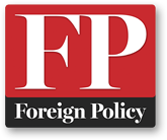
BY
Afghanistan remains awash in opium, despite $8.2 billion in American taxpayer dollars spent since 2002 to curb its rampant drug production and trade, a U.S. reconstruction watchdog concluded Thursday.
The country’s own drug use rates remain among the highest in the world, according to a new quarterly report by the congressionally mandated Special Inspector General for Afghan Reconstruction, or SIGAR.
A 2014 World Drug Report by the U.N. Office on Drugs and Crime confirmed Afghanistan again leads the world in opium production and for the third consecutive year saw more land being used for poppy farming — a record 520,000 acres — despite U.S. efforts.
But it looks like the U.S. military has had about enough. With 9,800 American troops focused on training Afghan forces and running counterterrorism missions before withdrawing in December 2016, SIGAR reported that the Defense Department will use $2.8 billion earmarked for counternarcotics activities this year to pay for other needs.
In all, Congress has appropriated $109 billion for Afghanistan reconstruction since 2002.
For years, American military and policy leaders favored an aggressive approach to poppy eradication. That fostered resentment among local farmers and put money in the pockets of warlords, who then were contracted to do the work. But as part of the war’s more recent counterinsurgency missions, more of an effort was made to introduce alternative crops, which also failed.
And Afghan opium continues to flood drug markets, including 90 percent of Canada’s supply and 85 percent of the worldwide market, according to the SIGAR report. Yet hardly any Afghan heroin makes its way to the United States, despite the growing appetite for the drug. Overall, the U.N. found that Afghan heroin accounted for only 4 percent of drugs sold in the United States.
In Afghanistan itself, a full 11 percent of the population tested positive for one or more drugs, according to the U.N.’s survey. To put that into context, the global average is about 5.2 percent.
No comments:
Post a Comment